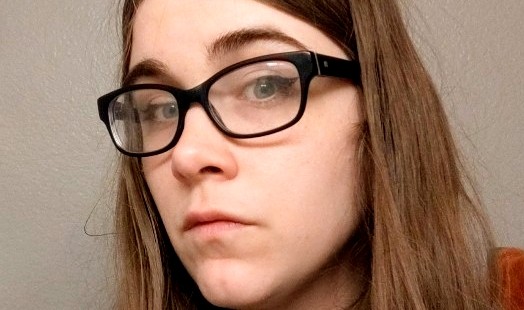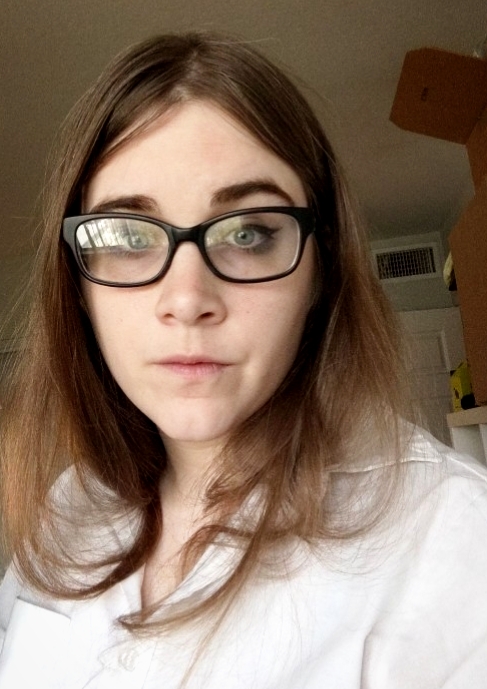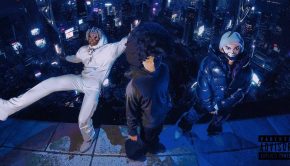Working For Netflix, Walt Disney, Dreamworks and Cartoon Network – Allison Perry
Allison Perry is a highly touted and widely recognized art director. She has one of the best repertoires of art directors worldwide. Allison has relished experiences working for some of the world’s foremost conglomerates. Some of the mega companies she has had the distinguished privilege of working for include Netflix, Walt Disney, Dreamworks, Paramount Pictures, Cartoon Network, Nickelodeon, Gameloft, Riot Games and many more. Her career feats are indicative of her truly profound gifts. The Hype Magazine’s Life & Style correspondent, Charles Myambo (CM) had an interview with Allison Perry (AP). Below are some excerpts from the interview.
Art Director @ Netflix – “Allison Perry
CM: Just looking at your resumé is enough to make anyone’s head spin a little. What has been your experience while working for/with Walt Disney, Cartoon Network, DreamWorks, Nickelodeon and Paramount Pictures?
AP: I think something a lot of people don’t realize about animation is just how much our work is short-term/freelance. Compared to other fields where an employee may work 5-10 years full-time at one company, it’s not uncommon for animation workers to have lots of short contracts at many studios – even full-time work can last as short as 3 months! Much of the experience you listed was freelance and lasted less than a month. Due to tighter and tighter schedules/budgets, teams frequently get crunched and have to bring on freelancers to meet deadlines. For that reason, freelance work tends to be much more Silo’d than full-time work – you’re usually sent a handful of assignments that you don’t always know the context of, don’t interface with (or sometimes even really know) anyone outside the few people coordinating your work, and don’t really go into the office to work with the team. It’s not necessarily a bad thing – there’s a lot of flexibility in it, and most of the experiences you listed were perfectly pleasant (albeit short), but it’s not what people usually think of when you say a “job.” While it may look very impressive on a resume, it’s also quite stressful and exhausting because there’s not a lot of stability/consistency and you’re almost always looking for that next gig.
CM: Your pedigree in art design and animation is unprecedented! How does someone accomplish as much as you have over the past decade?
AP: lol, thank you! Like I said, a lot of it has just been trial-and-error – if anything, I’d say adaptability, persistence, and fostering the ability to learn things by the seat of my pants have been just as important as drawing well… if not more so! I’m regularly faced with new and intimidating situations, but I approach them with the trust that I can figure them out, because I know one of my strengths is the ability to learn and adapt. I ask for help/advice a lot, make my goals known to my community, believe there’s nothing to lose in taking my shot for something I want, try not to take rejection/failure personally, and just generally strive to be my own best advocate. Learning to draw is time-consuming, but ultimately pretty straight-forward – you can find plenty of cheap (or even free) curriculums online detailing how, but I think a lot of people focus too much on the craft, and while that’s important, not developing adaptability and learning skills can make you rigid and difficult to place on a team.
CM: At present, you have quite a pivotal role for streaming giant, Netflix. Walk me through what comprises the work life of an art director @ Netflix.
AP: I actually started on my project as a background paint lead, which reports to the art director, then later stepped into the art director role a little over halfway through production after the previous one moved on. During pre-production, most of our time was spent ramping up for production – ideating on and pitching important designs to the showrunner/execs, fleshing out the style, drafting documentation to help our artists during production, putting together reference/inspiration to use as a springboard for design, and creating key art that would go directly into the show. At the time I was the background paint lead, so my attention was focused on the light/color/etc. of the background line art (which is created by the background designers and led by the background design lead), but the art director at the time was responsible for similar pre-vis tasks (as well as other things), albeit with a larger scope (backgrounds, characters, props, and more). Both as a background paint lead as well as an art director, once we moved into production, my role became more managerial, and the actual design work moved to the artists we hired. From the storyboards I identified what assets needed to be created, assigned them to our designers, put together reference/color keys/sketches to help them get started, reviewed their work, and sometimes did or completed work myself.
As an art director, post-production is more about working with the partner studio (who actually does the animation and sometimes finalizes some design work as well) – you become the general point-person for design as everyone else on the in-house design team (including the leads) has moved on. This can include anything from help with post-production work like compositing/color correction/etc., giving feedback to the partner studio, and last-minute design changes/additions. It’s the most jack-of-all-trades phase of art direction because you can be called upon to do just about anything that’s design-related and given the unpredictability of what may be needed in any one week, the workload can vary wildly between light and heavy. All that being said, I really want to highlight the fact that I don’t believe my role as a lead or art director is any more pivotal than that of the artists themselves. If anything, I think their work is more important, since they’re usually the ones actually creating the work – a cartoon can be made with a team of just artists, but not with a team of just managers. In other words, I’m largely there to make their job easier to do well. I think a lot of people want to lead because it feels prestigious and important, but I think that’s the worst reason to want to do so. My philosophy is that my role is to be of service to my reports by advocating for and empowering them – not the other way around.
CM: How and when exactly did you realize that your artistic prowess was way above average?
AP: lol, while there was definitely a point when I aspired to be “above average,” I don’t know if that’s how I think about it now (or really even want to). Not only is comparison the thief of joy, but also, I think there’s more nuance to art than just “good” or “bad” – it’s not linear/hierarchical like that, and I think understanding it in those terms can be really limiting and negative. Instead, I try to understand work in terms of “fits” when it comes to professional work – an artist isn’t “good” or “bad,” but rather they may be a “strong fit” or “poor fit” for the specific needs of a project in terms of style, pace, level-of-detail, etc. Understanding this helps rejection not feel so personal – it’s not that you’re a “bad artist,” you may just not be the “right fit” for that project. And when it comes to personal work, I just try to follow my joy. If I want to draw, I draw; if I don’t, I don’t – I’m not doing it for anyone else but myself. I’ve made a very conscious effort over the years to decouple my personal work from any notion of what I “should be” doing or that I “need to” constantly improve – thinking about it in those terms is a quick way to make your free-time feel like a job and burn out, which ironically isn’t even a very good or sustainable way to improve.
CM: What have been some of your favorite projects over the period of your illustrious career?
AP: Unfortunately, I can’t say much about it specifically at the moment, but I really like the project I’m on now – there’s a healthy work-life balance, the people are patient and compassionate, I feel valued and advocated for, leadership has extended a lot of trust to me, and I think it’s a genuinely beautiful show both visually and narratively. Before that, I really enjoyed helping out on “City of Ghosts” – again: healthy work-life balance, good people, I felt valued, and it was a really cool show both stylistically and narratively. It’s a hidden gem if you haven’t seen it yet – I highly recommend it!
CM: Accomplishments aside, what has your life presented to you in terms of adversity and how have you managed to retain your drive amid trials?
AP: I didn’t start taking art seriously as a career until I was about 20, so I spent a lot of my early 20s feeling “behind,” even though I know now that it’s not race and there’s no “too old” to start doing art (or anything else). It didn’t help that I think everyone is really confused and insecure in their early 20s, and they tend to circulate and amplify that anxiety amongst themselves. It’s a tough age – I don’t miss it. I also struggled a lot with the disconnect between academic and career success – I got good grades, but they never seemed to translate to job offers or even call-backs. It was really frustrating and demoralizing, especially as my peers were getting internships/jobs and I wasn’t (even though I know now that others’ achievements have no bearing on my own). Eventually my impending student loan payments forced me to break out of the “just keep your head down and draw well/get good grades” mindset and come to terms with the fact that employment (especially in this economy) is about more than just skill. It’s highly dependent on network as well, and I was neglecting that, thinking if I just got “good enough” at art, it’d “make up” for my lack of networking.
There’s a great book called “Kids These Days: Human Capital and the Making of Millennials” by Malcom Harris – I highly recommend it, especially to anyone feeling a similar disconnect between “school” and “career.” Lastly, I really hoped “success” in my career would resolve my low-self-esteem, which over the years had resulted in very poor boundaries, constant people-pleasing, unhealthy relationships, workaholism, body image issues, etc. I think a lot of people struggle with this because just like when you have a hammer, every problem looks like a nail – when so much of your life is centered around work and career achievement, it’s easy to assume more of it is the solution to everything. Low self-esteem isn’t about achievement, though – it’s about how you value and feel about yourself, and you heal that through therapy, introspection, a supportive community, etc., not working harder.
CM: Lastly, what would your message be to creatives around the world that would love to emulate your level of success?
AP: Haha, my message would be “don’t.” “Success” is deeply subjective and nebulous. Everyone has different values, goals, needs, etc., and my idea of “success” may look completely different from someone else’s. For example, I value having my basic needs met and time to do what I love with the people I love – that has very little to do with my career outside of the salary and work-life balance I need to maintain it. “Success” measures achievement, not joy, love, fulfillment, community, etc., which I would encourage not just creatives but everyone to reflect on, because I think they make far better compasses than the vague idea of “success.” Also, careers are rarely linear and no two are ever the same. There’s so much you have no control over and just as much that’s completely serendipitous and irreplicable. Instead, I’d suggest focusing more on getting in touch with what joy, fulfillment, etc. look like to you, identifying the actionable goalposts on the way to that, breaking those goalposts into smaller more manageable steps, and executing them.
By all means, you can ask people for help and guidance on those steps but remember specific questions get specific answers. A broad question like “how can I emulate your success?” is too massive to meaningfully answer, and if someone says they can, I’d regard them with suspicion – especially if that answer comes with a hefty price-tag like a class, mentorship, college, etc. I’m not saying these services aren’t worth compensation or that they can’t imbue you with skills/networking opportunities that may lead to positive outcomes, but no one class, mentorship, college, etc. is a one-stop shop for “success.” If anything, I’d just reiterate the earlier point be persistent, adaptable, and self-advocating. Don’t be afraid to shoot your shot, try not to take rejection too personally, and learn how to learn quickly – those skills go a long way.
Tweet


































